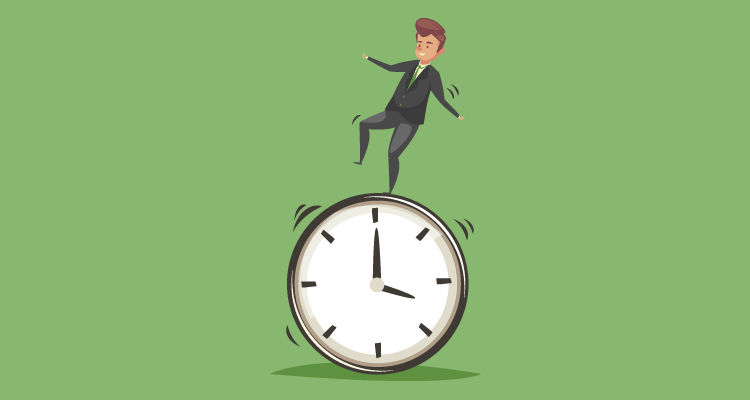You wake-up on a Monday morning only to have that sinking feeling in your gut. It’s not because you’re coming down with anything. It’s because you know that the upcoming week is going to be chaotic. And, once that hits you, you’re probably starting to question how you’re possibly going to get everything done. It’s completely possible if you use the following seven tips to accomplish more with a calendar tool.
Table of Contents
Toggle1. Create a “complete calendar.”
Based on a suggestion from James Clear about having a plan for implementation, Corbett Barr developed what he calls “the complete calendar.”
Here’s how it works:
“First, start by identifying the most important things you need to get done every week. Only focus on recurring tasks, not on one-time tasks. I chose to include only things that take an hour or more at a time.” For example, writing, responding to email, exercising, eating lunch, and team meeting.
“Next, take all of these items and start plotting them on a calendar. It took me a while to find the best places to slot things in throughout the week. You might want to start in a notepad or spreadsheet or something that’s easy to change before committing to adding things to a proper calendar.”
Since Corbett prefers routine, he made his days follow a similar pattern. “Mornings are reserved for writing & planning. Mid-day is for support & email, lunch, workouts, and meetings. Afternoons are reserved for task list work.”
What makes “the complete calendar” so effective is that it dedicated specific times for specific tasks. If you don’t complete the task by the allotted time, quit and revisit it during the next block associated with that task.
Google Calendar and Outlook can both be used for this method since you can easily create recurring events with timeframes.
2. Schedule appointments with yourself, just like you would schedule meetings with others.
Why do we hesitate when scheduling time for ourselves, but have no problem doing so when it comes to others? After all, we need time to complete our work, reflect, and recharge. And, if we don’t schedule that time, we’ll never get our priorities.
In order to stay focused and productive, we need to set aside time to work on our tasks without constantly being interrupted. One of the easiest ways to do this by blocking off these specific time on your preferred calendar app so that you’re not working on anything else.
3. Use smart technology to remind you of key events.
Apps like Any.do, Todoist, Fantastical 2, Evernote, and Google Calendar have made it incredibly easier to set up alarms and repeating events. This way you’re able to to get more thing done throughout the since since you’re reminded of your potatoes.
4. Block off time for email and social media.
Like you, I was guilty checking my email or social media accounts every time that I received a notification. The problem was that this would interrupt my flow. As a result, my focus was broken and it distracted me from completing my priorities.
If you don’t have the willpower to manually turn off these notifications, then install the Freedom app. This nifty app isn’t a calendar per say. But, it blocks distracting sites and apps while working on a task for a set aside amount of time.
For example, you can schedule a writing session from 8 a.m. to 9:30 a.m. You can then set Freedom to automatically block your emails or Twitter during that time.
5. Create theme days.
“Chunking has been another effective way to ensure I have focused blocks of times for my priorities. By putting minimal blocks of time in my calendar, I make sure these focal areas see regular progress,” writes Mark Koester.
“Unfortunately with so many goals and priorities, a single day in my calendar can turn into a lot of competing interests. My productivity might struggle during days where I try to write, do finances, manage a client, check-in with my team and code. I have focused blocks of time, but having too many focuses in a day can lead to distractions and burn out.”
“This is where ‘Theme Days’ can help.”
“Theme Days are essentially all-day focuses. Like chunking or time blocks, a theme day is focused on a particular area or project. For me this might be writing, coding studies or a particular client project.”
“By focusing my attention and time on a single area, I’m able to get more done. Similarly I’m able to better schedule tasks. Instead of having scatter-brain, multitasking days, I take new tasks and assign them to the relevant theme day.”
“On the calendar I note theme days as all-day events and they appear at the top, making it clear my goal for that day.”
6. Eliminate the back-and-forth communications when scheduling meetings and appointments.
How many phone calls or emails have you sent trying to schedule a meeting or appointment? Regardless of the exact number, that back-and-forth communication wastes a lot time. Thankfully, there are a number scheduling apps that have eliminated this headache.
Calendar, for example, allows you to set your calendar availability. You then share it with others through email or embedded link on your website. The other party picks the best time and the event is added to everyone’s calendar.
It doesn’t get any easier than that, does it?
7. Review your calendar periodically.
Schedule the time to periodically review your calendar. Does it reflect your priorities accurately? Or is it unbalanced?
For instance, your calendar could be full of low-priority meetings or phone calls. That’s eating away at time spent on higher priorities. If so, then you’ll need to reallocate your time, which could lead to you saying “no” to certain meetings or activities.














